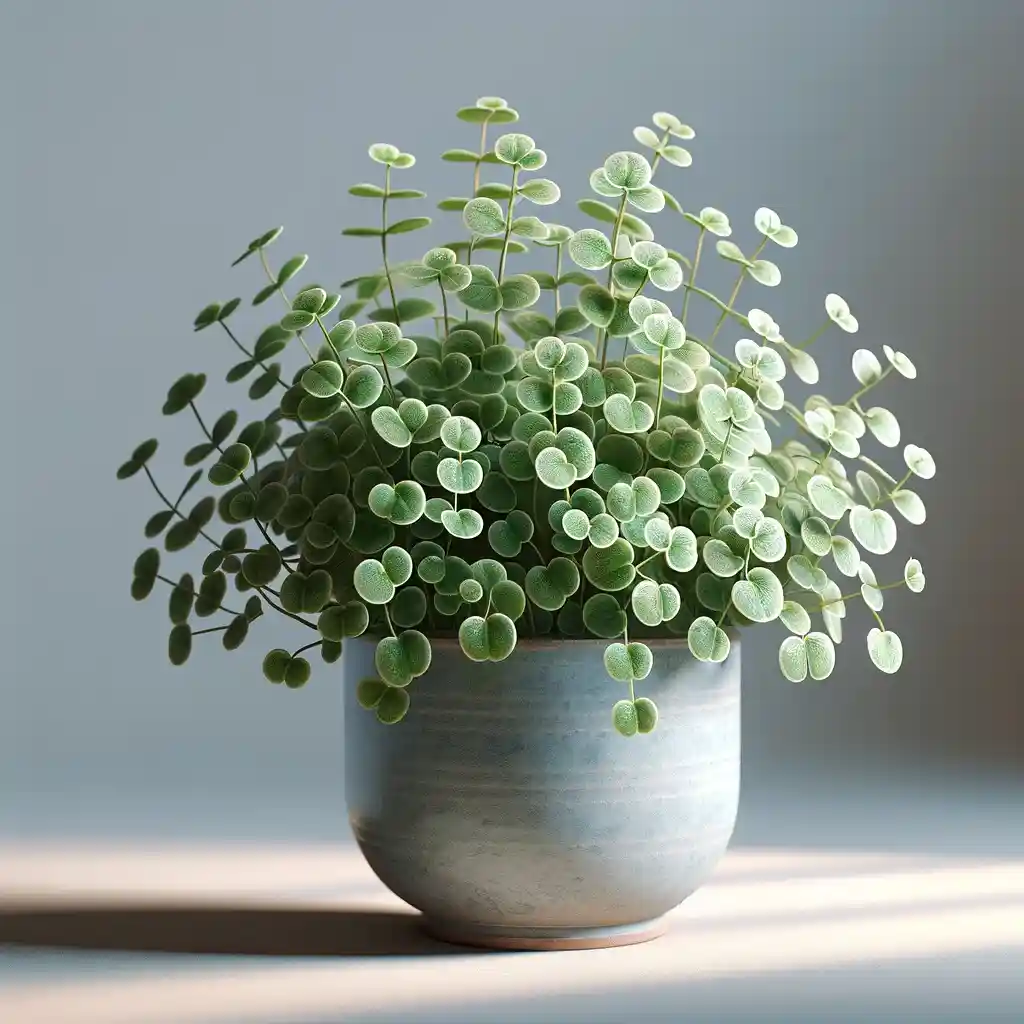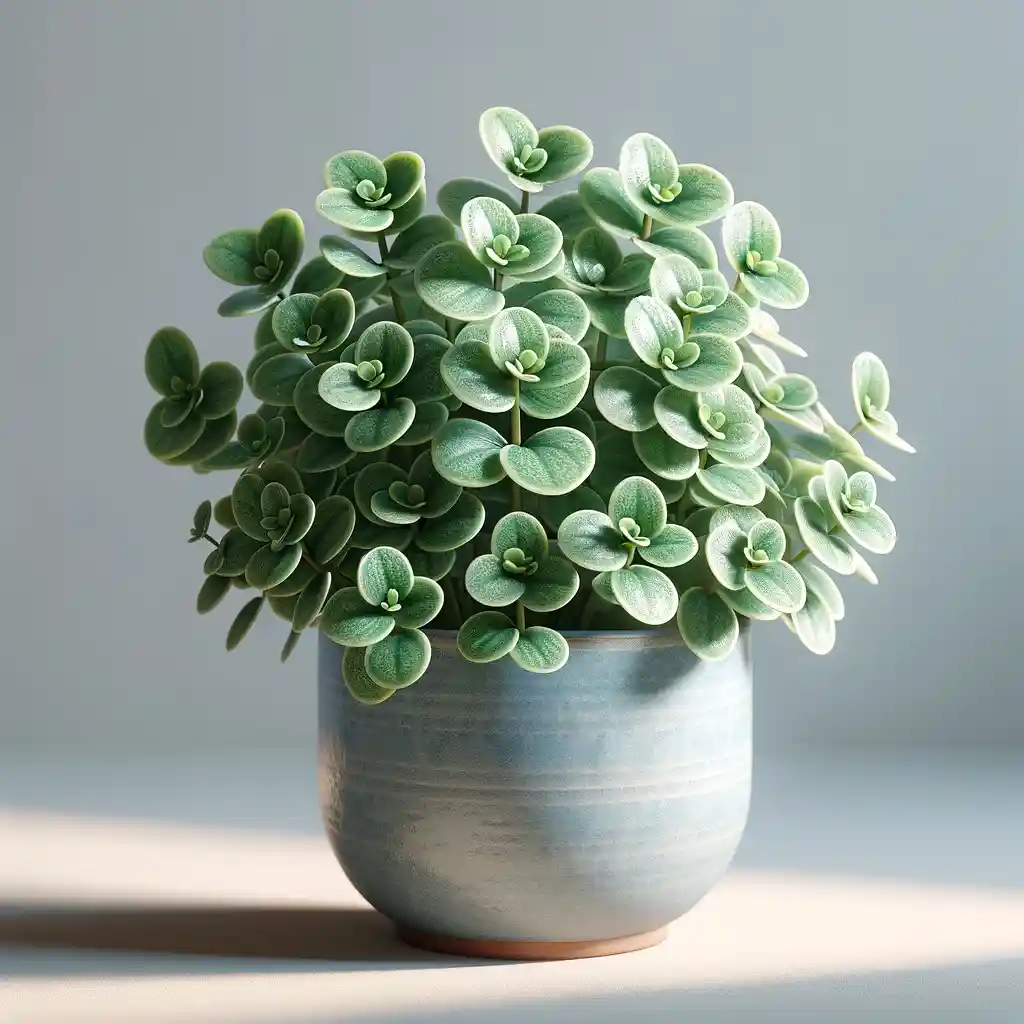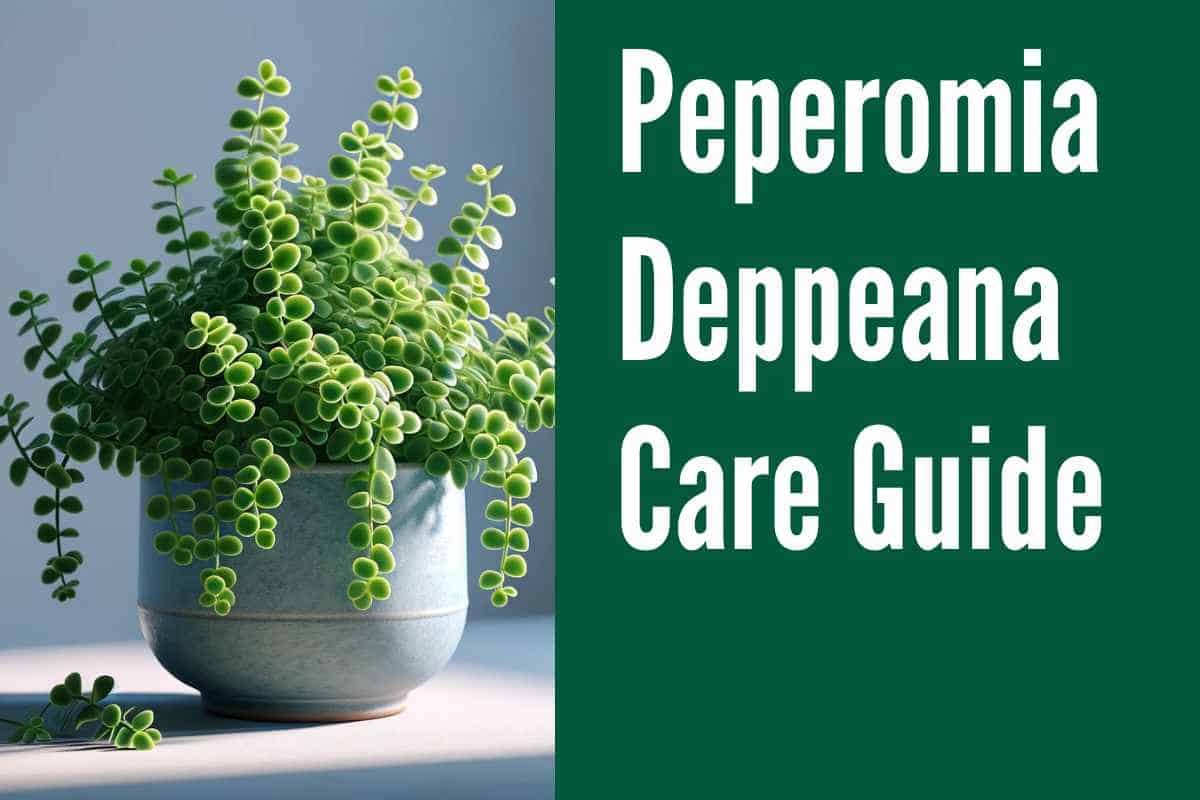Peperomia Deppeana is a diverse houseplant that adds greenery to any home. It is tolerant of drought, low light conditions, and requires minimal maintenance.
This Peperomia Deppeana care guide will explore the cultivation and history of Peperomia deppeana, propagation methods, growing tips, and how to manage pests and diseases.
By following these care practices, you can ensure lush foliage and the overall health of your Peperomia deppeana plant.
Key Takeaways:
- Proper Peperomia Deppeana care leads to lush foliage and overall plant health.
- Peperomia Deppeana is a versatile houseplant that can tolerate low light and drought conditions.
- Propagation methods for Peperomia Deppeana include stem cuttings, divisions, transplants, and seeds.
- Provide bright indirect light, maintain humidity levels, and fertilize during the growing season for optimal growth.
- Watch out for common pests like mealybugs and spider mites, and manage fungal diseases through proper watering and air circulation.
See Also:
Cultivation and History of Peperomia Deppeana
Peperomia Deppeana, a member of the pepper family, belongs to a diverse genus of plants consisting of over 1,000 species. This particular species is native to tropical regions in South America, North America, Asia, and Africa. It is widely cultivated as a houseplant due to its adaptability and minimal care requirements.
Peperomia Deppeana is known for its semi-succulent nature, allowing it to store water in its leaves or stems. This characteristic enables the plant to thrive in various environmental conditions, including partial shade and dappled sunlight. Whether you are a beginner or an experienced grower, you can enjoy the beauty of Peperomia Deppeana in your indoor space.
The History of Peperomia Deppeana
The history of Peperomia deppeana traces back to its discovery in the 19th century by the German botanist Ferdinand Deppe, after whom the plant is named. Deppe, an avid plant collector, encountered this species during his explorations in Mexico and Central America. Since then, Peperomia deppeana has gained popularity among plant enthusiasts worldwide for its attractive foliage and easy care requirements.
Cultivation Tips for Peperomia Deppeana
Cultivating Peperomia deppeana is a rewarding experience. To ensure optimal growth and health, place the plant in an area that receives bright indirect light. Avoid exposing it to direct sunlight, as it can scorch the delicate leaves. Provide well-draining soil and water the plant when the top inch of the soil feels dry. Remember to fertilize during the growing season and maintain a moderate level of humidity by misting the leaves.
| Light | Watering | Soil | Fertilizer | Humidity |
|---|---|---|---|---|
| Bright indirect light | When top inch of soil is dry | Well-draining | During the growing season | Maintain moderate humidity |
By following these cultivation tips, you can ensure that your Peperomia deppeana thrives and displays its lush foliage, adding a touch of greenery to your home environment.
Propagation of Peperomia Deppeana
Propagating Peperomia deppeana is a simple and rewarding process that allows you to expand your collection or share this beautiful plant with others. The most common method of propagation is through stem cuttings. To propagate using stem cuttings, follow these steps:
- Select a healthy stem with two to three leaves.
- Cut the stem just below a node using a clean, sharp knife or scissors.
- Remove the lower leaves, leaving only a few leaves at the top.
- Place the cutting in a well-draining soilless seed-starting mixture, ensuring that at least one node is buried in the soil.
- Water the cutting lightly to settle the soil around it.
- Keep the cutting in a warm, brightly lit area, away from direct sunlight.
- Maintain a consistent level of humidity by covering the cutting with a plastic bag or using a propagation tray with a dome.
- Roots should begin to form within a few weeks. Once the cutting has developed a healthy root system, you can transplant it into a suitable pot with well-draining soil.
Another method of propagation is through divisions. This involves cutting away stems from a mature Peperomia deppeana plant and replanting them. To propagate through divisions, follow these steps:
- Choose a healthy, mature plant with multiple stems.
- Carefully remove the plant from its pot, taking care not to damage the roots.
- Divide the plant into smaller sections, ensuring that each division has roots and stems.
- Plant each division in a separate pot with well-draining soil.
- Water the divisions lightly to settle the soil around them.
- Place the divisions in a warm, brightly lit area, away from direct sunlight.
- Keep the soil consistently moist but not overly saturated.
- The divisions should establish roots and start growing within a few weeks.
| Propagation Method | Difficulty Level | Time to Rooting |
|---|---|---|
| Stem Cuttings | Easy | 2-4 weeks |
| Divisions | Moderate | 3-6 weeks |
How to Grow Peperomia Deppeana
When it comes to growing Peperomia deppeana, there are a few key factors to keep in mind. This care guide will provide you with the essential tips and techniques to ensure the health and vitality of your plant. Follow these steps to foster optimal growth and enjoy the lush foliage that Peperomia deppeana has to offer.

Light and Temperature
Peperomia deppeana thrives in bright indirect light. Place your plant near a window where it can receive bright, filtered sunlight throughout the day. Avoid placing it in direct sunlight as it can scorch the leaves. In terms of temperature, Peperomia deppeana prefers a warm environment. Maintain a temperature range of 64°F to 78°F (18°C – 26°C) for optimal growth.
Watering and Humidity
Proper watering is essential for the health of your Peperomia deppeana. Water the plant when the top inch of soil feels dry to the touch. Avoid overwatering, as this can lead to root rot. Peperomia deppeana enjoys slightly moist conditions, so ensure that the soil is consistently damp but not waterlogged. In addition, this plant appreciates higher humidity levels. Mist the leaves regularly or place a humidity tray nearby to create a humid microclimate.
Fertilizing and Pruning
During the growing season, it is beneficial to fertilize your Peperomia deppeana. Use a balanced, water-soluble fertilizer and apply it according to the manufacturer’s instructions. Regular fertilization will provide the necessary nutrients for healthy growth and vibrant foliage. Additionally, prune your plant as needed to remove any yellowed or damaged leaves. This will encourage bushier growth and help maintain the overall appearance of the plant.
| Plant Care Tips |
|---|
| Place the plant in bright indirect light |
| Water when the top inch of soil is dry |
| Mist the leaves or use a humidity tray for increased humidity |
| Fertilize during the growing season |
| Prune to remove yellowed or damaged leaves |
By following these care practices, you can ensure the successful growth and development of your Peperomia deppeana. With its attractive foliage and easy maintenance, this plant is a wonderful addition to any indoor space.

Growing Tips for Peperomia Deppeana
To ensure the best care for your Peperomia deppeana, here are some essential growing tips:
Light and Placement:
Peperomia deppeana thrives in bright, indirect light. Place your plant near a window with filtered sunlight or provide artificial grow lights. Avoid direct sun exposure, as it can scorch the leaves.
Watering and Humidity:
Water your Peperomia deppeana when the top inch of soil feels dry. Be cautious not to overwater, as this plant is susceptible to root rot. Use well-draining soil and allow excess water to drain through the pot’s drainage holes. Maintain humidity levels by misting the leaves or placing a tray of water near the plant.
Fertilization and Pruning:
Fertilize your Peperomia deppeana during the growing season to promote healthy growth. Use a balanced, water-soluble fertilizer and follow the package instructions. Prune the plant regularly to remove any yellowed or damaged leaves and encourage bushier growth.
Avoid Temperature Extremes:
Peperomia deppeana prefers temperatures between 64°F to 78°F (18°C – 26°C). Avoid exposing the plant to extreme cold or hot conditions. Keep it away from drafts, air conditioning vents, and radiators.
| Growing Tips for Peperomia Deppeana | |
|---|---|
| Light and Placement | Place in bright, indirect light |
| Watering and Humidity | Water when top inch of soil is dry; maintain humidity |
| Fertilization and Pruning | Fertilize during growing season; prune for bushier growth |
| Avoid Temperature Extremes | Avoid extreme cold or hot conditions |

Species and Cultivars of Peperomia Deppeana to Select
Peperomia deppeana offers a range of species and cultivars to choose from, each with its own unique characteristics and appearance. Let’s explore some popular types:
Peperomia tetraphylla ‘Hope’
This variety features round succulent leaves and a trailing habit, making it an excellent choice for hanging baskets or cascading planters. With its vibrant green foliage, Peperomia tetraphylla ‘Hope’ adds a touch of freshness and liveliness to any space.
Peperomia deppeana x quadrifolia
This hybrid combines the best features of both parent plants, resulting in a unique and visually appealing specimen. Peperomia deppeana x quadrifolia showcases a delightful mix of leaf shapes, colors, and patterns, creating a captivating display.
Peperomia Hope ‘Ruby Cascade’
If you prefer a touch of elegance and a pop of color, Peperomia Hope ‘Ruby Cascade’ is an excellent choice. It boasts deep green leaves with hints of red along the edges, adding a subtle yet eye-catching contrast. This cultivar can be a stunning addition to any collection.
| Variety | Description |
|---|---|
| Peperomia tetraphylla ‘Hope’ | Round succulent leaves, trailing habit |
| Peperomia deppeana x quadrifolia | Combines characteristics of both parent plants |
| Peperomia Hope ‘Ruby Cascade’ | Deep green leaves with hints of red on edges |
These are just a few examples of the species and cultivars available for Peperomia deppeana. Whether you prefer a trailing variety, a unique hybrid, or a colorful cultivar, there is a Peperomia deppeana plant that will suit your taste and enhance the beauty of your indoor space. Explore these options and find the perfect addition to your plant collection.
Managing Pests and Disease in Peperomia Deppeana
Growing Peperomia deppeana is relatively hassle-free as it is resistant to most pests and diseases. However, there are a few common issues that you may encounter. By identifying and addressing these problems early on, you can ensure the optimal health and well-being of your plant.
Pests:
The most common pests that might affect your Peperomia deppeana include mealybugs and spider mites. These tiny insects can infest your plant, causing damage to the foliage.
To manage these pests, you can wash the plant with a solution of neem oil or insecticidal soap. Be sure to cover all parts of the plant, including the undersides of leaves, where pests tend to hide. Repeat this treatment every week for a few weeks until the infestation is under control.
Diseases:
Fungal diseases can occasionally affect Peperomia deppeana, especially if the plant is overwatered or doesn’t have proper air circulation. Common fungal issues include leaf spots and powdery mildew.
To prevent fungal diseases, make sure to provide good air circulation around the plant by placing it in a well-ventilated area. Avoid overwatering and ensure the soil is well-draining. If you notice any signs of fungal infection, such as discolored or powdery patches on the leaves, remove the affected parts immediately to prevent the spread of the disease.
| Pest or Disease | Symptoms | Treatment |
|---|---|---|
| Mealybugs | White cottony clusters on leaves and stems | Wash with neem oil or insecticidal soap |
| Spider Mites | Small webbing on the underside of leaves, yellow or stippled leaves | Wash with neem oil or insecticidal soap |
| Fungal Diseases | Leaf spots, powdery mildew | Improve air circulation, avoid overwatering, remove infected parts |
Regularly inspect your Peperomia deppeana for any signs of pests or diseases. Early detection and prompt action are essential in keeping your plant healthy and thriving. By following these simple steps, you can ensure that your Peperomia deppeana remains vibrant and pest-free.

Quick Reference Growing Guide for Peperomia Deppeana
When it comes to caring for your Peperomia deppeana, here is a quick and easy guide to help you ensure its health and vitality:
Light:
Place your Peperomia deppeana in a spot with bright indirect light. It thrives in well-lit areas but should be protected from direct sunlight, which can scorch its delicate leaves.
Watering:
Water your Peperomia deppeana when the top inch of soil feels dry to the touch. Avoid overwatering, as this can lead to root rot. It’s always better to underwater slightly than to overwater.
Humidity:
Peperomia deppeana enjoys moderate humidity levels. To increase humidity, you can mist the leaves regularly or place the plant on a tray filled with water and pebbles. This will create a humid microclimate around the plant.
Fertilization:
During the growing season, fertilize your Peperomia deppeana with a balanced, water-soluble fertilizer diluted to half strength. Feed the plant once every four to six weeks to provide it with the necessary nutrients for healthy growth.
Pruning:
Regularly prune your Peperomia deppeana to remove any yellowed or damaged leaves and encourage bushier growth. This will keep your plant looking neat and tidy while promoting new foliage.
Potting and Soil:
Choose a well-draining soil mix for your Peperomia deppeana to prevent waterlogged conditions. A mixture of peat moss, perlite, and sand works well. Additionally, select a pot with drainage holes to allow excess water to escape.
Pests and Diseases:
Although Peperomia deppeana is generally resistant to pests and diseases, it’s important to monitor your plant for any signs of trouble. Common issues include mealybugs, spider mites, and fungal diseases. If necessary, treat with neem oil or insecticidal soap and improve air circulation to prevent fungal growth.
By following these care instructions, you can ensure the well-being of your Peperomia deppeana and enjoy its lush foliage for years to come!
Conclusion
In conclusion, caring for Peperomia deppeana is a rewarding and enjoyable experience. This versatile houseplant is well-suited for any indoor space, bringing beauty and greenery to your home. With its low maintenance requirements and ability to thrive in various conditions, it is a perfect choice for both beginners and experienced plant enthusiasts.
By following the care tips and best practices outlined in this guide, you can ensure the optimal health and lush foliage of your Peperomia deppeana. Remember to provide bright indirect light, water the plant when the top inch of soil is dry, and maintain humidity levels through misting and humidity trays. Fertilize during the growing season and prune for bushier growth. It is also important to choose well-draining soil and a suitable pot, watch out for pests and diseases, and rotate the plant for even growth.
I hope this guide has provided valuable insights into Peperomia deppeana care. Enjoy the beauty and tranquility that this wonderful plant brings to your indoor space. Happy gardening!

